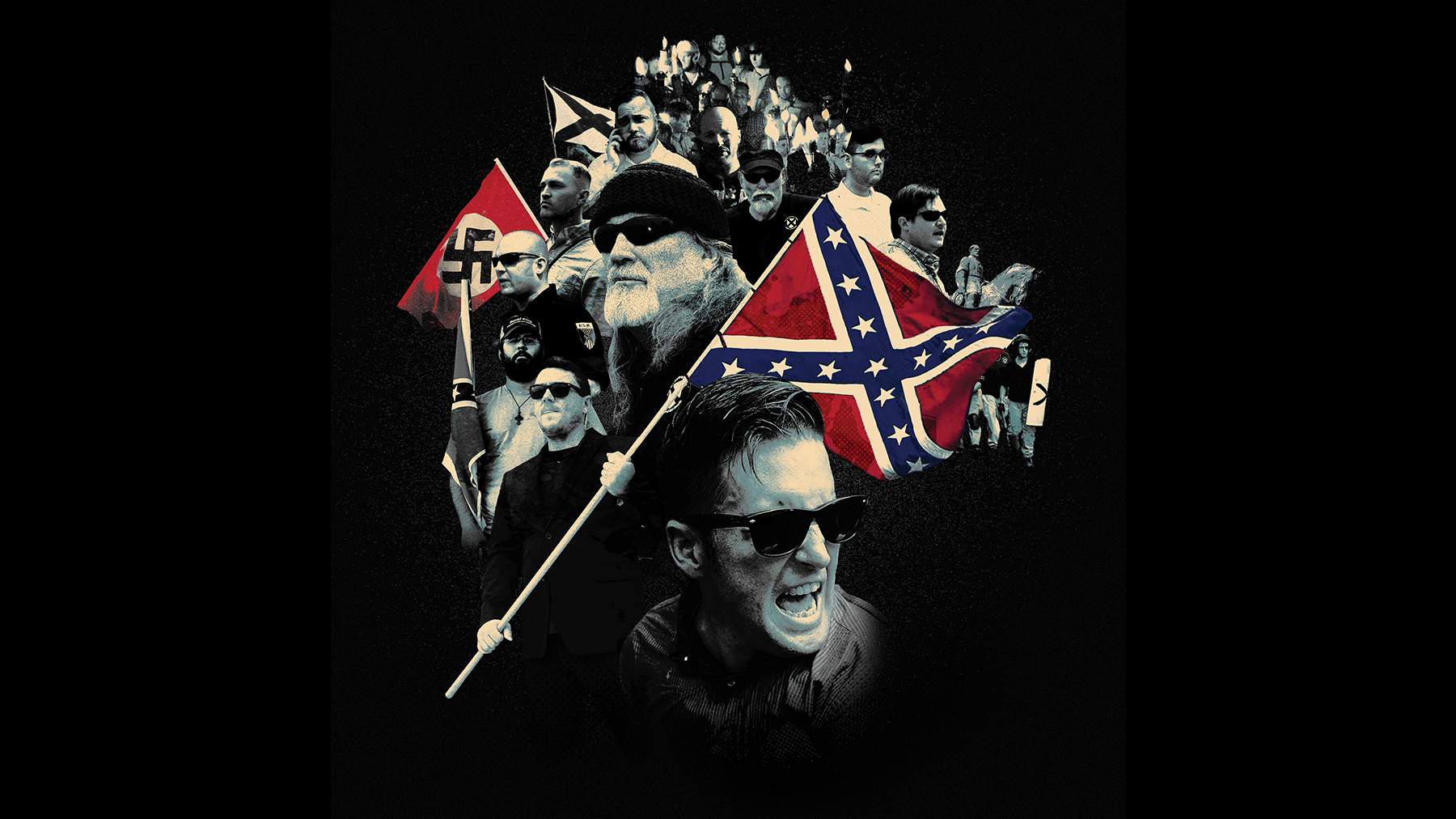Jump to:
Hate Map
Hate Map by State
Hate Map by Ideology
2018 Spring Intelligence Report
Bitcoin and the Alt-Right
How Tech Supports Hate
President Trump’s first year in office proved to be just as racially divisive as his campaign — but even more consequential.
“President Trump in 2017 reflected what white supremacist groups want to see: a country where racism is sanctioned by the highest office, immigrants are given the boot and Muslims banned,” said Heidi Beirich, director of the SPLC’s Intelligence Project. “When you consider that only days into 2018, Trump called African countries ‘shitholes,’ it’s clear he’s not changing his tune. And that’s music to the ears of white supremacists.”
It was a year that saw the “alt-right,” the latest incarnation of white supremacy, break through the firewall that for decades kept overt racists largely out of the political and media mainstream.
- Trump appointed key administration advisers with ties to the radical right, including Stephen Bannon, the head of Breitbart News who boasted of turning the website into “the platform for the alt-right.” The president thrilled white supremacists with his policy initiatives, such as revving up the country’s deportation machinery and curtailing civil rights enforcement.
- Reinvigorated white supremacists staged their largest rally in a decade – the demonstration in Charlottesville, Virginia, that left an anti-racist counterprotester dead and Trump equivocating over condemning racism. Former Klan boss David Duke called the rally a “turning point” and vowed that white supremacists would “fulfill the promises of Donald Trump” to “take our country back.”
- White supremacist groups ramped up their recruiting of college students. White nationalist leader Richard Spencer – who previously had prompted Nazi salutes from a post-election audience in Washington when he shouted “Hail Trump” – held a rally at the Lincoln Memorial and appeared on college campuses. The SPLC documented some 300 incidents of racist flyers being distributed on more than 200 campuses.
The SPLC’s Year in Hate and Extremism report identifies 954 hate groups – an increase of 4 percent from 2016. The rise was driven in part by a backlash from the Nation of Islam and other fringe black nationalist groups that see Trump as an avatar of the rising white supremacist movement, a powerful reassertion of the same centuries-old racism that has always fueled their desire to break away from white America.
Typified by their anti-Semitic, anti-LGBT, anti-white rhetoric and conspiracy theories, these black nationalist groups should not be confused with activist groups such as Black Lives Matter and others that work for civil rights and to eliminate systemic racism.
Nation of Islam leader Louis Farrakhan blamed Trump for encouraging a “growing sentiment” to “put the Black, the Brown, the Red back in a place they have cut out for us.” His newspaper, The Final Call, wrote that “separation from White America” is the “divine solution” to the rise of white supremacy.
Not surprisingly, the ranks of black nationalist hate groups – groups that have always been a reaction to white racism – expanded to 233 chapters in 2017, from 193 the previous year.
Even with the growth, black nationalist groups lagged far behind the more than 600 hate groups that adhere to some form of white supremacist ideology – and they have virtually no supporters or influence in mainstream politics, much less in the White House.
Within the white supremacist movement, neo-Nazi groups saw the greatest growth – from 99 groups to 121. Anti-Muslim groups rose for a third straight year. They increased from 101 chapters to 114 in 2017 – growth that comes after the groups tripled in number a year earlier.
Ku Klux Klan groups, meanwhile, fell from 130 groups to 72. The decline is a clear indication that the new generation of white supremacists is rejecting the Klan’s hoods and robes for the hipper image of the more loosely organized alt-right movement.
The overall number of hate groups likely understates the real level of hate in America, because a growing number of extremists, particularly those who identify with the alt-right, operate mainly online and may not be formally affiliated with a hate group.
The Year in Hate and Extremism report also examines how the tech industry cracked down on hate groups after the Charlottesville rally by banning the social media accounts of prominent white supremacists, removing website domains of hate groups and canceling services such as PayPal that help hate groups to raise money.
A separate SPLC investigation, released earlier this month, found that 43 people were killed and 67 wounded by young men associated with the alt-right over the past four years. Seventeen of the deaths came in 2017.
Also, for the first time, the SPLC added two male supremacy groups to the hate group list: A Voice for Men, based in Houston, and Return of Kings, based in Washington, D.C. The vilification of women by these groups makes them no different than other groups that demean entire populations, such as the LGBT community, Muslims or Jews, based on their inherent characteristics.
Aside from hate groups, the SPLC identified 689 active antigovernment groups that comprised the “Patriot” movement in 2017, up from 623. Of these, 273 were armed militias.
Historically, these groups rise during Democratic presidencies out of fear of gun control measures and federal law enforcement action against them. They typically decline under GOP presidencies. This has not been the case under Trump, whose radical views and bigotry may be energizing them in the same way he has invigorated hate groups.
Illustration by Max-O-Matic



